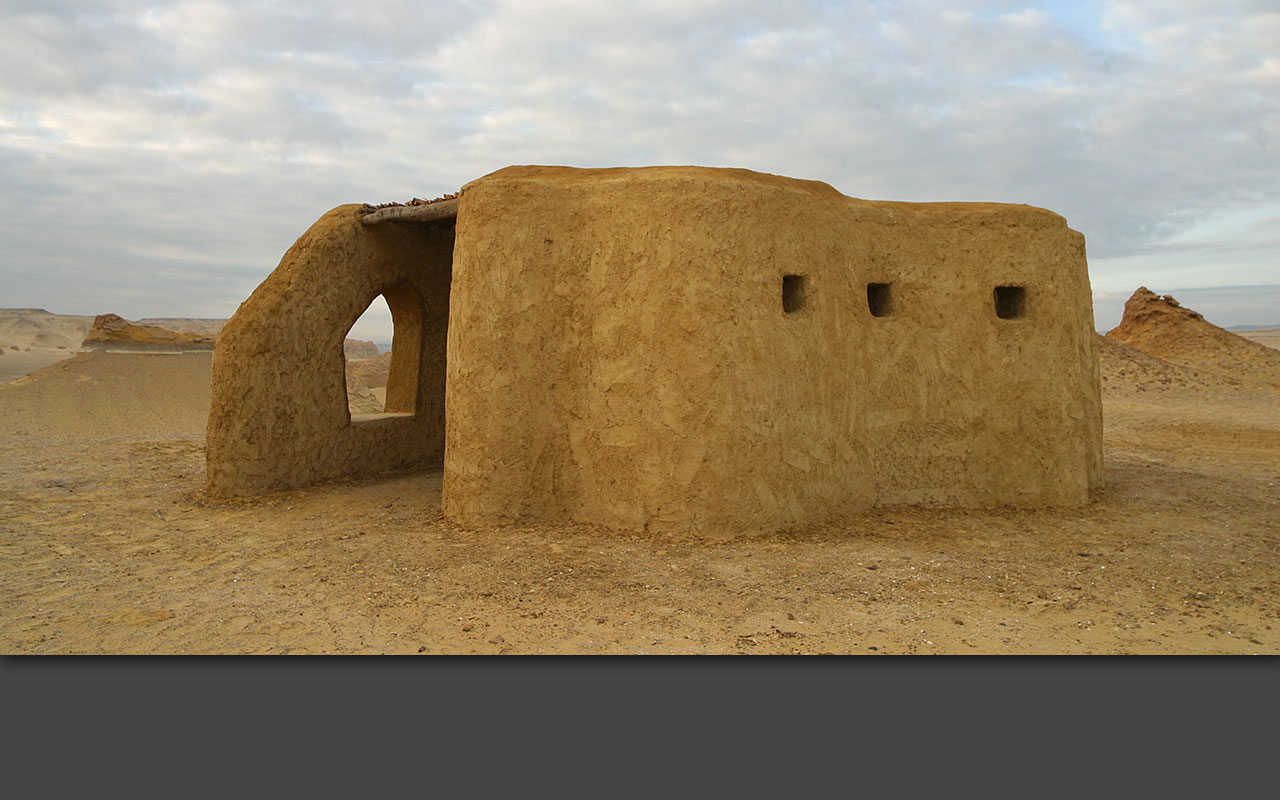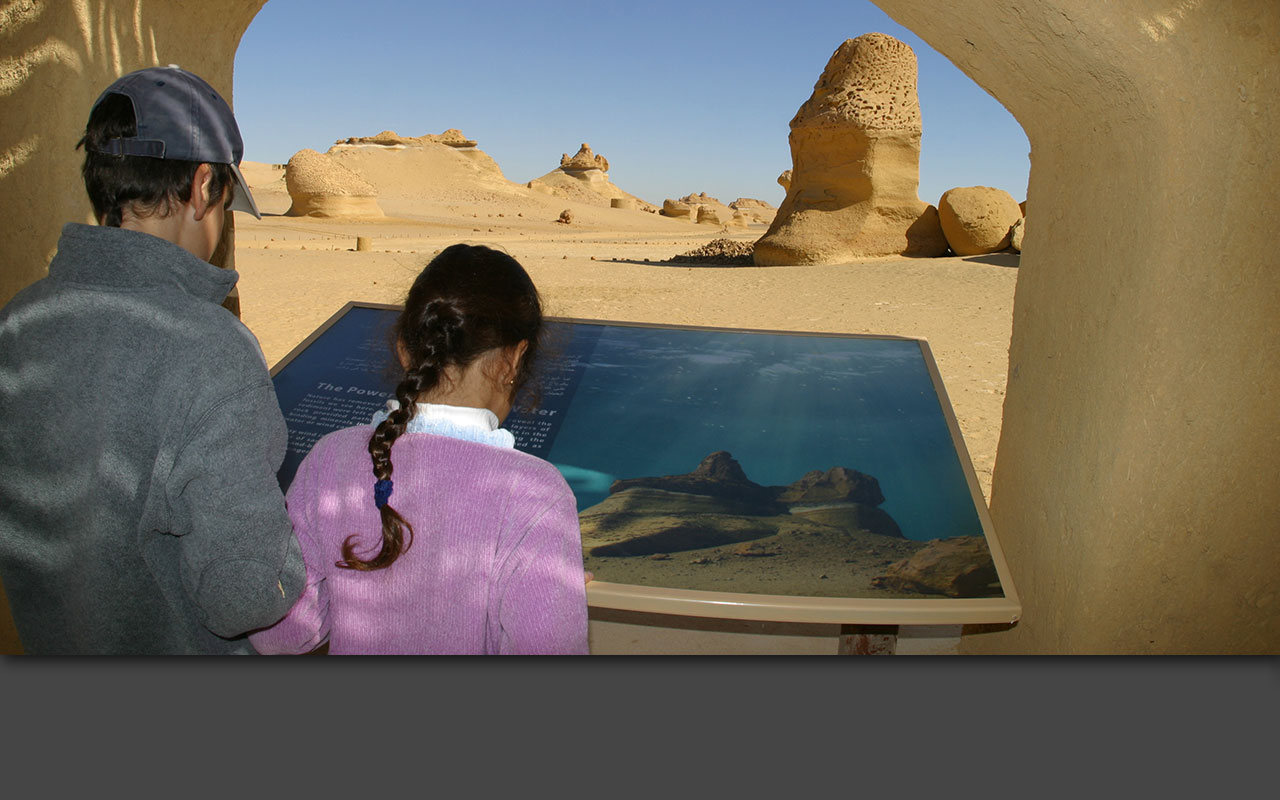Wadi El Hitan World Heritage Site Park infrastructure & Visitor facilities
 The fossils of ancient whales discovered in this region of the Western
The fossils of ancient whales discovered in this region of the Western Desert 170 kilometers south west of Cairo, have helped answer important questions about the evolution of life on Earth. Studies of these fossils have confirmed that the whales of today’s oceans evolved from an existence on land. Here, visitors will discover fossils of many species that existed about forty million years ago and learn how the whales of Wadi El-Hitan have contributed to an understanding of the evolution of modern whales.
The landscape in Wadi El-Hitan is unique; huge boulders of varying sizes, shapes and textures dominate the landscape and provide a striking background for the fossils. Designing facilities for this sensitive site of global importance presented several challenges.
How could the architecture be least intrusive on such a unique landscape?
The architecture must be submissive and allow the landscape to continue to dominate and not vice-versa; after all it is the site that is of global interest. If man is a dominating species he must learn submission when dealing with nature and its conservation. Therefore, architecture must never intrude or pretend to be the main attraction over such an irreplaceable natural landscape.
How would the architecture respond to the rich cultural heritage of this region? The region’s architectural vocabulary is quite diverse. From prehistoric to present times, distinctive mixes of cultures have left a unique wealth of art and architecture.
How could the architecture benefit the local people and also benefit from their local knowledge and skills? The region supports communities of fellaheen (farmers) who farm nearby land and fish in the two lakes. They have developed an attractive vernacular architecture utilizing the limited template of available organic and sustainable materials while employing passive means for climate control.
Could the architecture be progressive while being rooted in the past? What would be the theme for the open-air museum? How will the actual construction impact the site? These and many other questions were examined, research was undertaken in order to study the natural and cultural realities which could provide a clue or be the basis for providing suitable architecture and interpretive facilities.
Through functional and aesthetical aspects of ecomimicry, vernacular architecture and the use of local labor and materials, the architecture aimed to introduce design innovations that lessen human impact on the landscape, respond to the hot climate and harness the combined creative talents of nature, local communities and artists.
The design innovations were inspired by nature through mimicking the earth tone colors, textures and shapes of the landscape. Each of the structures was custom designed on site in order to fit in harmony with its immediate surroundings and show minimal interference and visual impact with the fossils or the landscape.
Mud brick and plaster became the materials of choice; deeply entwined in the regions culture, utilized from ancient through modern times and readily usable by local labor. It is made of earth and when it disintegrates will fade back into the earth without scarring the landscape. It has high insulation properties and is certainly sustainable; fluid by nature it is perfect for ecomimicry. The signage was also constructed from clay, burnt in the oven of a local artist.
Construction proceeded with extreme caution; any mud mixing was performed over removable plastic sheets and trails were clearly marked for the movement of labor and materials. No lorries were allowed into the site; instead, donkeys were used for the transportation of materials.
* The construction of these facilities was made possible with the support of EEAA, Wadi El-Rayan’s twin park—Gran Sasso National Park in Italy, the Government of Italy, UNDP and IUCN (The World Conservation Union).









